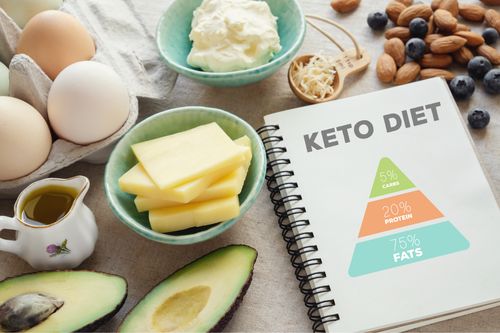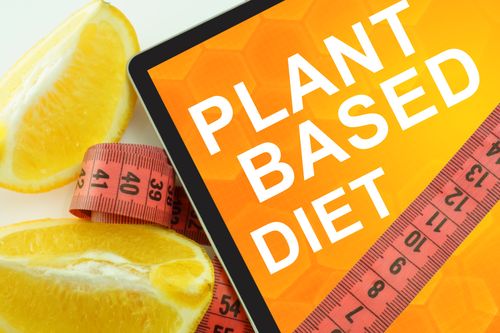Beginner’s Guide to Starting a Weight Loss Diet
With a plethora of diet plans available at one’s disposal, it can get confusing to decide which one is right for you. Let us take you through some details you would want to know. We have tried to cover all aspects to consider before starting a weight-loss diet.
There are many weight loss programs found online. Some of them are extremely effective. But, a lot of these diet plans may lead to loss of muscle mass. In the process, we overlook the importance of burning fats. Muscle wasting can have detrimental consequences, as muscle forms a crucial component of your health, especially as you grow older. You must focus on fat loss.
Weight Loss and Fat Loss are Two Different Things
Before starting a weight-loss diet, you need to differentiate between weight loss and fat loss. Weight loss is the reduction in your overall body weight. It is a mix of loss of muscle mass, fat, and the loss of water from body tissues, resulting in weight loss. Fat loss is only the reduction in excess body fat. It is a specific and healthier goal than the former. You need to know if you are losing weight due to the fat being burnt or due to loss of muscle.
What Needs to be Done Before Starting a Weight Loss Diet?
Weighing scales cannot differentiate between weight loss from fat loss or muscle loss. Speaking to a specialist or a body fat scale is better to understand your body fat composition. Losing muscle can be detrimental to overall health and can lead to long-term health risks like heart issues, diabetes. Hence, the focus should be on getting healthy, building strong muscles, and losing weight in the process. The parameters should be defined in such a way that you get fitter after starting a weight-loss diet.
Weight Loss vs. Fad Diets
Different diet plans work differently for different people. It is dependent on your body type, your lifestyle, and your health concerns. The whole idea is to understand which diet plan works best for you. Make a well-informed decision by consulting your nutritionist before following any of these plans.
Below, we have listed a few diet plans to kick start your weight loss journey:
Intermittent Fasting
This plan focuses on when to eat the food rather than what to eat. Intermittent fasting is an eating pattern in which you switch between periods of eating and fasting. Most of us are fasting every day when we are sleeping. Intermittent fasting extends this same period of fasting a little longer.
Some people skip breakfast; eat their first meal at noon, and their dinner at 8 PM. This way, they have fasted for approximately 16 hours a day. The eating time gets restricted to an 8-hour time frame. This method of intermittent fasting for weight loss is the most popular and is known as the 16:8 method. You can drink water and other non-caloric beverages like green tea, lemon water, and black coffee during the fasting period. Other popular forms are dry fasting, 5:2 diet, warrior diet, alternate-day fasting, etc.
The Pros: A lot of positive changes take place in the body when you fast. For instance, blood sugar levels drop, metabolic rate increases and the risk of cardiovascular diseases reduces. It is an easier method of losing weight. It simplifies the process by reducing the need for complicated meal planning.
Cons: One of the physiological changes that occur in the body is a spike in the level of the stress hormone, cortisol. This can lead to sleep and mood disorders, like depression. Since you are eating less than normal, you need to eat high-quality food so that you do not compromise on nutrition.
If you are under 18 years of age, pregnant, or breastfeeding, intermittent fasting isn’t for you. It may even be counterproductive. Sometimes, not eating for extended periods can trigger episodes of binge-eating and overeating. This in turn may lead to an increase in the fat deposit.
Keto Diet or the Ketogenic Diet
This diet is low in carbohydrates and high in fat. Keto diets put your body in a metabolic state called ketosis, in which your body becomes efficient at burning fat for energy. A standard keto diet (SKD) typically consists of 70% fat, 20% protein, and meagre 10% carbohydrates. Other variants like the cyclic keto diet are popular among athletes. Many studies claim that keto diets are an effective way to lose excess body fat and lower some risks. Such risks predispose you to certain diseases. A caloric deficit has been proven to be essential to losing weight.
The Pros: Keto diets help your body enter a caloric deficit mode, which forces your body to burn away the excess fat for energy. Studies have shown that keto diets have improved insulin sensitivity in diabetics by about 70%, along with improved blood sugar levels. Keto diets help protect you from increased cholesterol levels, which are responsible for heart diseases. Eating a high-fat diet also helps slow down certain tumor-like growth. Certain neurological disorders are also kept under control with high fat and low-carbohydrate diet.
Cons: This diet is quite difficult to stick to. Keto diets limit your food options to a few. Hence, it might put you at a greater risk of developing nutrient deficiencies. Knowing your macros well can avoid the possibility of vitamin and mineral deficiencies. The lack of fibre can cause digestive issues, such as constipation. Your kidneys may be sent into overdrive because of all the extra ketone bodies that they have to process and excrete.
Plant-Based Diets
These diets are also easier on the environment. Some people use them synonymously with vegan diets, and others use them to collectively refer to all vegetarian diets. The aim is to include foods. Such foods may include vegetables, fresh fruits, lentils, and beans. It can also help limit food consumption like dairy, meat, fish, and eggs. You may choose to cut down completely on animal-based products or limit their consumption.
The Pros: Plant-based diets lead to decreased body fat content and promote heart health. Some studies have shown that consuming plant products reduces the risk of developing diabetes mellitus. Plant-based diets are known to boost metabolism and reduce inflammation.
Cons: People who are just switching on to plant-based diets might face digestive complications, either diarrhea or constipation. If a plant-based diet is not well-planned, it may lead to certain micronutrient deficiencies. Vitamin B12 and vitamin D deficiencies can occur. Plant protein is an incomplete protein and needs proper food combining to get complete protein. People following plant-based diets can often develop protein deficiencies. The deficiency can be kept under control by talking to a qualified nutritionist.
A Balanced Diet Plan for Weight Loss
You may choose a diet regime from any of the above to start your weight loss journey. You can also opt for a diet plan that advocates eating frequent small meals at regular intervals but you need to work that out after consulting with a nutritionist. It is always good to get help from an expert who understands your body type and your nutrition needs based on your medical history.
It is necessary that your diet has all the essential macronutrients and micronutrients that your body needs. The common weight loss foods are rich in protein, vitamins and minerals, and healthy fats. They are low in refined carbohydrates and saturated and Trans fats.
Find a sample of a three-day balanced diet plan for starting your weight journey here:
Day 1
9:00 AM: Breakfast – 2 parathas with a stuffing of your choice and 100g skimmed curd
11:00 AM: Any fresh fruit of your choice
1:00 PM: Lunch – ½ cup cucumber salad, 1 cup vegetable brown rice pulao, ½ cup lentils curry, raita
4:00 PM: Tea/Coffee and 2 dhoklas
8:00 PM: Dinner – ½ cup green salad, 2 chapatis, ½ cup brinjal sabji, 1 cup any soup of your choice
Before bed: 100ml jeera water
Day 2
9:00 AM: Breakfast – 1 cup vegetable poha, 1 glass skimmed milk (sugarless)
11:00 AM: Any fresh fruit of your choice
1:00 PM: Lunch – ½ cup sautéed vegetables, 1 cup brown rice, ½ cup lentils curry, 50g skimmed curd
4:00 PM: Lauki juice
8:00 PM: Dinner – ½ cup carrot-capsicum salad, 2 phulka rotis, ½ cup bottle gourd sabji, 1 cup any soup of your choice
Before bed: Aloe vera juice
Day 3
9:00 AM: 3 brown rice idlis, 1 cup sambar
11:00 AM: Any fresh fruit of your choice
1:00 PM: Lunch – ½ cup mixed vegetable salad, 1 cup vegetable khichdi, ½ cup cabbage sabji, 50g skimmed curd
4:00 PM: Tea/Coffee, ½ cup puffed rice with mung sprouts
8:00 PM: Dinner – ½ cup green salad, 2 phulka/rotis, ½ cup palak dal curry, 1 cup any soup of your choice
Before bed: Ajwain water
Weight loss requires dedication and sincerity, and there is no shortcut to a “fast weight loss”. It is a way of life and a long-term commitment to your own self. Following a weight-loss diet may not always seem easy. Talking to a professional or having an accountability buddy before starting a weight-loss diet will get you back on track.
Also Read:




